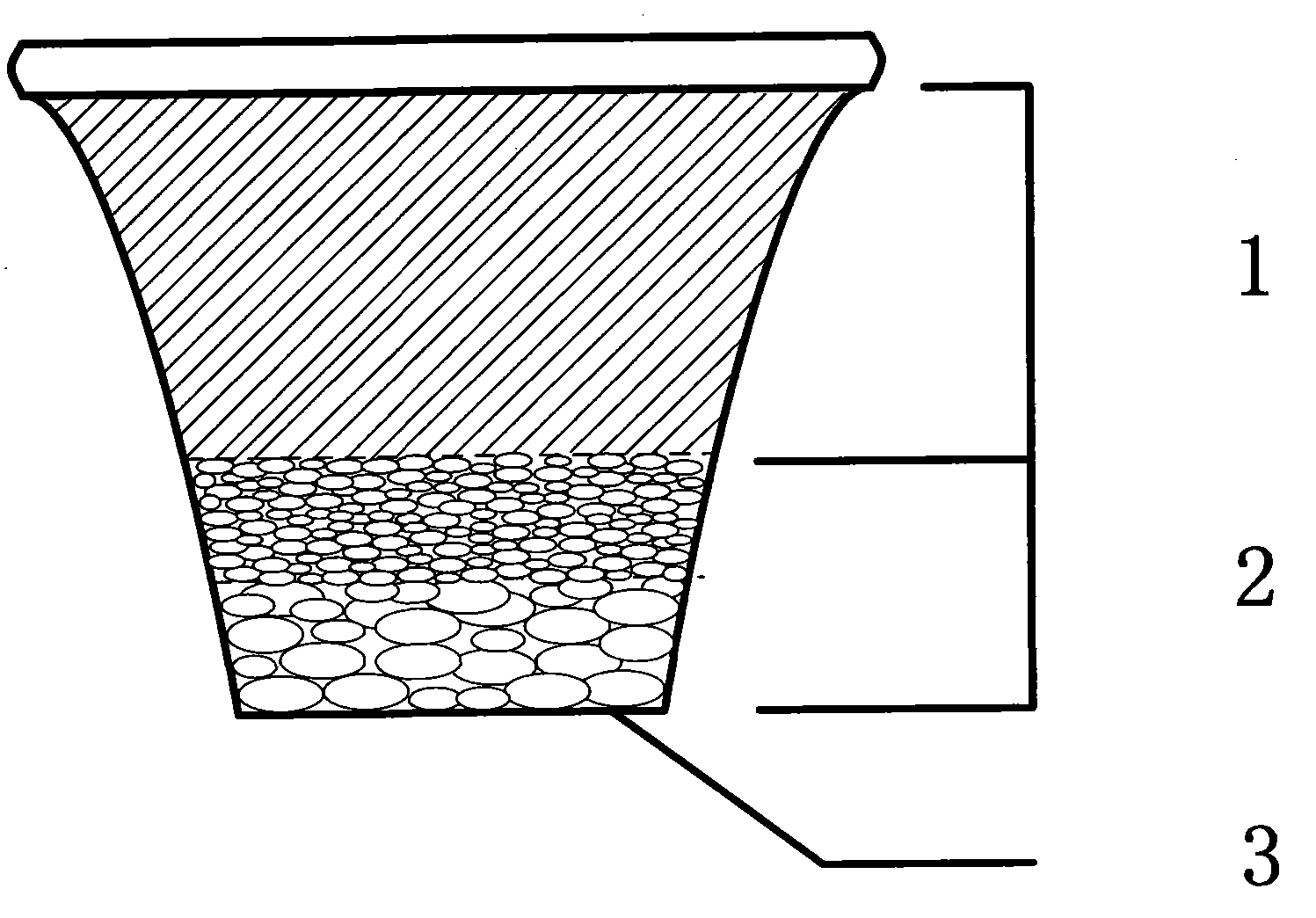Method of using lake sediment and coal slag as compost
A technology for cultivating soil and bottom mud, which is applied in the field of environmental ecology, can solve the problems of increasing the implementation range and difficulty of bottom mud reuse, unfavorable promotion and implementation, and complicated treatment procedures, so as to solve the problem of soil utilization, easy to promote, and simple The effect of the operation
- Summary
- Abstract
- Description
- Claims
- Application Information
AI Technical Summary
Problems solved by technology
Method used
Image
Examples
Embodiment approach
[0012] Shown by accompanying drawing, the present invention is a kind of construction method of artificial cultivated soil. From top to bottom: 1 is lake sediment, 2 is cinder.
[0013] Before filling, the bottom mud is subjected to light sterilization treatment, and the cinder is sieved into large particle size particles (2-5cm) and small particle size particles (0-2cm). When potting, lay the large-sized particles on the bottom of the basin first, then fill the small-sized particles on it, and finally spread the lake bottom mud on the upper layer. In addition, according to the growth characteristics of planting plants, determine the volume ratio (1 / 4~1 / 3) of bottom sludge and coal cinder and the corresponding pretreatment. For example, drought-loving plants can relatively increase the proportion of cinders and shorten the infiltration time of water; when planting acid-loving plants, you can first wash the cinders with a small amount of water to reduce the alkalinity of cinde...
Embodiment 1
[0016] The culture soil is prepared according to the volume ratio of cinder and bottom mud of 1:4, and the cinder is soaked before potting to reduce alkalinity. Transplant gardenias into pots in March and water them thoroughly every 3 days. The leaves are evergreen throughout the year, and the flowers bloom lushly in June.
Embodiment 2
[0018] The culture soil is prepared according to the volume ratio of coal cinder and bottom mud of 1:3. Cultivate tomato seedlings in the cultivation soil in late April, and water them every 5 days until the fruit matures in September. The heavy metal content is tested, and all of them meet the national vegetable heavy metal limit implementation standard.
PUM
 Login to View More
Login to View More Abstract
Description
Claims
Application Information
 Login to View More
Login to View More - R&D
- Intellectual Property
- Life Sciences
- Materials
- Tech Scout
- Unparalleled Data Quality
- Higher Quality Content
- 60% Fewer Hallucinations
Browse by: Latest US Patents, China's latest patents, Technical Efficacy Thesaurus, Application Domain, Technology Topic, Popular Technical Reports.
© 2025 PatSnap. All rights reserved.Legal|Privacy policy|Modern Slavery Act Transparency Statement|Sitemap|About US| Contact US: help@patsnap.com


